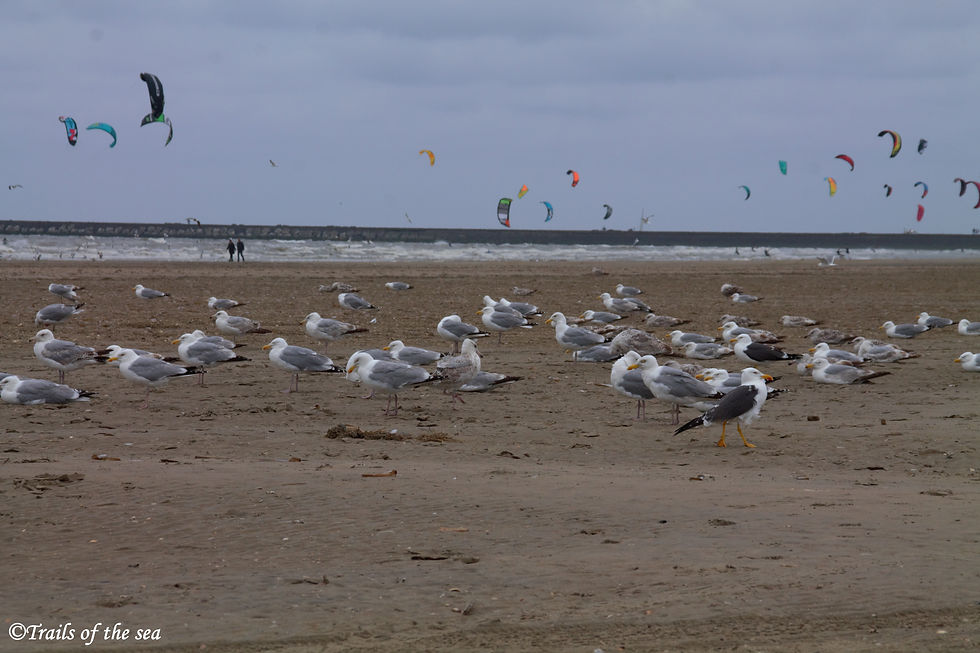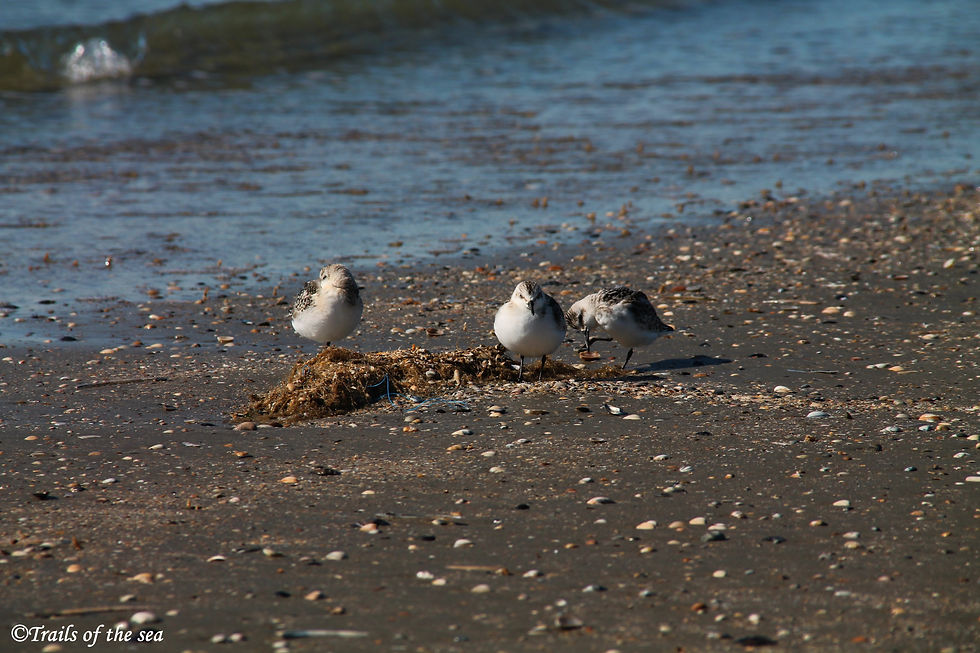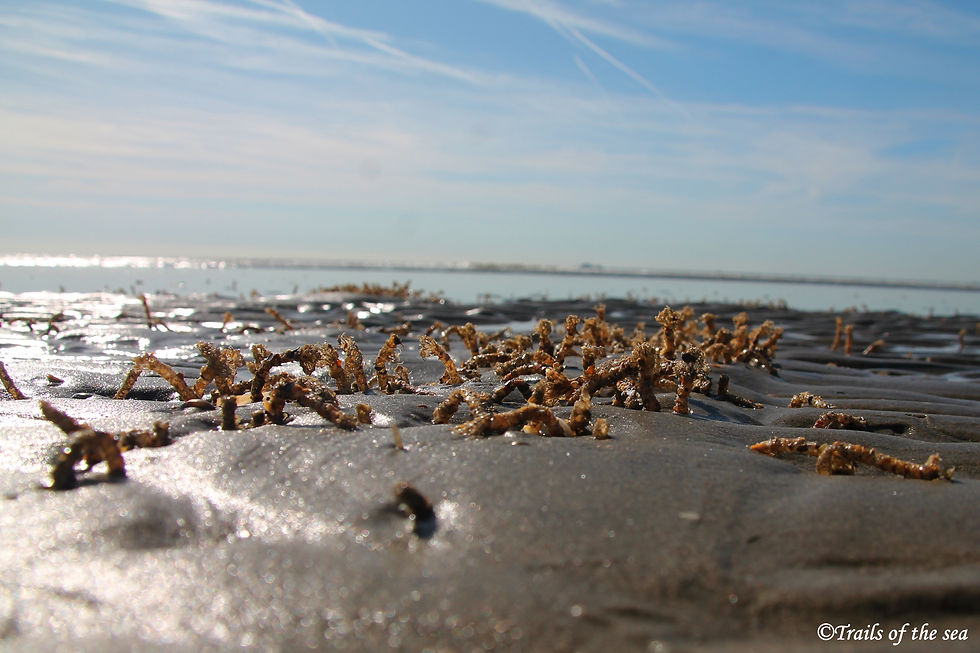The beach; a beautiful stretch of land made out of sand that connects the sea with the land. Most people see the beach as place to enjoy the sun, go for a swim, practice sports, walk their dog or to go for a walk to get a breath of fresh air. Especially during the pandemic the number of people going to the beach to exercise has risen significantly. But the beach is also a very important ecosystem and our presence disturbs this ecosystem.

Yes, I too come to the beach to relax and get a breath of fresh air, however I also go to the beach to look at the wildlife like coastal birds such as the sanderling. I love the interaction of the sanderling between the waves rolling onto the shore, how they, ever so quickly, run towards the receding water to forage on little invertebrates buried in the sand and run back to drier sand when a wave roles back onto the shore. I can observe this behaviour for ages, I find it so beautiful, cute and interesting to look at. But whenever I am sitting in a squat observing this behaviour, I notice that other people around me simply don’t really notice or don’t pay any attention to the little coastal birds. Sometimes the sanderlings and other coastal birds suddenly fly away and I wonder why, until I see a dog coming towards the birds at high speed. And some owners seem to find it amusing, is it really amusing though?
Imagine you are that sanderling, you found a good spot to forage and all of a sudden a predator comes towards you, the stress you go through to fly away with all the haste you can muster. However it’s not always dogs that scare the birds away, from time to time it is people themselves, who just keep on walking in the direction they want to go to and don’t want to deviate to go around the foraging and sometimes sleeping birds. Coastal birds also sleep close to the sea, you can see that when the birds are standing on one leg and with their heads tugged in underneath a wing.

But it’s not just these activities directly in the littoral (intertidal zone) where the birds and nature are disturbed, some birds also nest on the beach closer to the dunes. These nests are very well camouflaged and can easily be missed and someone might walk straight through the nest destroying it. Or dogs might eat the eggs. Besides the birds, this littoral region is also important for certain specific species of coastal flies like kelp flies who forage on little sand fleas in the seaweed that has been washed ashore. Furthermore the beaches are also used by seals as a resting place, it’s not that long ago that a seal has been attacked and killed by a dog on a Dutch beach. We humans disturb the nature of the beach in other ways as well, besides our recreational behaviour. We, especially on Dutch beaches, tend to manage the beach. We do this by cleaning up the beaches from plastics with the use of machinery. Using machinery means that no distinction is made between plastic and washed ashore seaweed, everything gets taken. Which leads to less places for the beaches’ wildlife to forage. We also use heavy machinery to flatten the beach by getting rid of the newly formed dunes. This is something we do a lot on the Dutch beaches, why? From April until September we place little beach houses on the beach that people have bought/ rented and where they can spend the summer on the beach. All this disturbance to the nature on the beach could be avoided by raising more awareness about the importance of the beach as an ecosystem, where certain species depend on.

The green beach.
Creating more awareness is part of the aim of a Dutch project ‘’het Groene strand’’ (the green beach). I am now part of this project as a trainee through a Groen (green) traineeship.
The aim of the project Het Groene Strand is to give nature and the experience of nature its place back on the beach. They/we want to tackle this by changing the current beach management, establishing beach communities and setting up protected areas for (nesting) birds. These beach communities will consist of a volunteer network in order to educate about the importance of the beach as an ecosystem, clean-up the beaches and collect data through citizen science. The ambition is to establish 20 beach communities at various locations along the Dutch coast and manage 200 kilometres of beaches as a green beach. A green beach means plastic free beach pavilions, clean beaches and resting sites for birds.
But how to include the youth in these communities? How can we reach them and let them enjoy the beauty of beach as a nature experience as well? That is what we, the 11 trainees, are going to look into. We meet up once a week (at the moment online but hopefully in the future in real life!). During this one day in the morning we get workshops from professionals about organizing, planning, beach ecosystems and more. These workshops will helps us during our afternoon sessions of actually working on ideas and the planning/organizing of an event. Hopefully at the end of this project we have organized an (online) event for the youth where they hopefully can experience the amazing ecosystem that is the beach. But we will also create a report for the beach communities with ideas and activities on how to include youth in these green beaches.
This traineeship will end in July and I will try and take you with me on this journey via little updates. These updates might just come via my social media channels (not sure yet how I am going to do this) so make sure to follow Trails of the sea on Facebook, Twitter and Instagram. Links to my social media channels can be found on my contact page.
In the meantime when you visit the beach keep an eye out to the amazing wildlife of the beach. Maybe And always be sure to bring a bag with you in case you find any litter that doesn't belong on the beach.

Comentarios